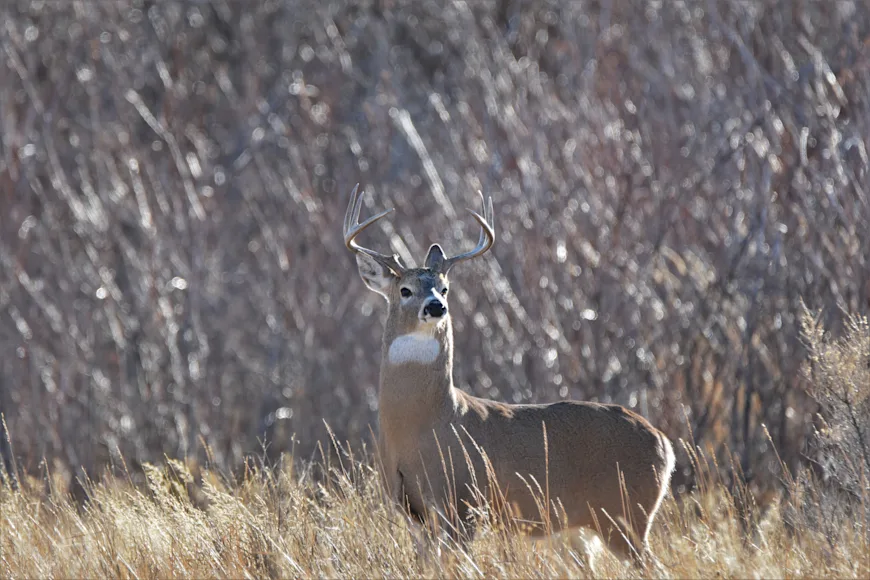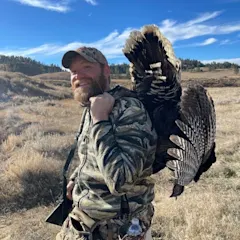Conservationists in the hunting and fishing community are raising red flags after a budget outline from President Donald Trump proposed massive cuts for conservation and habitat work and recommended the transfer of federally owned public lands to individual states. Among other things, Trump's 2026 discretionary budget would eliminate funding for the USDA's Natural Resource Conservation Service (NRCS) while slashing some $900 million from the National Park Service, nearly $200 million from Bureau of Land Management Conservation Programs, and a combined $734 million from the USGS and the US Fish & Wildlife Service.
The proposed cuts come on the heels of mass firings and employment-ending buyouts across all federal land agencies, measures implemented by the newly formed Department of Government Efficiency (DOGE). DOGE has also eliminated untold amounts of federal grant dollars that are typically funneled into conservation and habitat efforts via hunting and fishing-focused non-profits.
Upland Birds at Risk
Of particular concern to Pheasants Forever and Quail Forever is a line in the White House's new budget proposal that would strip $754 million from the USDA's Natural Resource Conservation Service (NRCS). NRCS works with landowners who want to improve wildlife habitat and enhance the environmental resilience of their property. In states across the country, landowners participate in NRCS-led habitat improvement projects that benefit everything from deer and elk to waterfowl and upland bird species.
According to Pheasants and Quail Forever Chief Conservation Officer Ron Leathers, NRCS funds are integral for bobwhite quail restoration in the Southeast. And the conservation work that the program bankrolls ensures that upland hunters from coast to coast will have pheasants to chase not just this coming fall but well into the future. The agency was established in the 1930s after the Dust Bowl ravaged agricultural lands throughout the Great Plains region.
"We employ a lot of biologists that work with landowners through the NRCS program," Leathers tells Field & Stream. "The USDA has an internal staff that does some of the work, but a lot of it is contracted out to us and other organizations. This effectively zeroes out the NRCS's technical assistance program."

The work benefits pheasants across their entire range, Leathers says. "It also covers the quail range and the prairie grouse range," he adds. "There is ruffed grouse work being done through NRCS. The National Wild Turkey Federation and Ducks Unlimited also do work through NRCS. The program has a broad impact on the entire conservation community."
Leathers says NRCS is closely tied to the USDA's Conservation Reserve Program (CRP). CRP is a voluntary program that allows farmers to convert agricultural land to full-time wildlife habitat. Participating landowners often choose to open CRP-enrolled acreage to some form of public hunting or fishing access.
According to the USDA website, the NRCS provides CRP enrollees "with technical assistance through conservation planning." So it's safe to say that if technical assistance was eliminated from NRCS, the CRP program would take a hit.
"CRP is a lifeline for pheasants," Leathers says. "It's no exaggeration to say that our pheasant populations would be a fraction of what they are today without the Conservation Reserve Program."

Other cuts within the Department of the Interior include a $16 million reduction to NRCS Watershed Operations, a $303 million cut for State, Local, Tribal, and NGO Conservation Programs, and more than $700 million in cuts to the already beleaguered US Forest Service.
Bad News for Trout
When it comes to fish habitat, Trout Unlimited is equally concerned. “All of the funding cuts—whether it’s to the BLM, the US Fish & Wildlife Service, or the NRCS—raise concerns for healthy fish and wildlife habitat and could imperil opportunities to restore lands and waters,” says TU’s Public Lands Policy Director Corey Fisher. “This is another example of asking our public land agencies to do more with less. It’s not going to result in good outcomes for fish and wildlife.”
Another agency facing large cuts in the budget outline is the United States Geological Survey (USGS). Fisher says the USGS provides valuable services for anglers in particular.
The Trump administration's budget outline would strip $564 million from USGS in Fiscal Year 2026. "The budget eliminates programs that provide grants to universities," reads a line item on page 30 of the 40-page budget outline, "...and focus on social agendas (e.g. climate change) to instead focus on achieving dominance in energy and critical minerals."

"A lot of anglers are familiar with USGS because of the stream gauge work they do across the country," Fisher said. "It's an invaluable resource for watching water levels when you're planning a fishing trip, and it's very important for water management. TU will be paying close attention to any proposed cuts to USGS."
Public Lands Imperiled—Again
The National Park Service, also housed under the Department of Interior, would take the single-biggest hit of any agency under President Trump's proposed budget cuts. In addition to stripping $900 million in funding from NPS's Operations budget, the White House's budget removes $73 million from the NPS Construction program and an additional $77 million from its National Recreation and Preservation Program. On top of that, the Administration wants to transfer ownership of an untold number of National Park sites it says would be "better categorized as state-level parks."
The budget doesn't name any specific NPS sites, but there are scores of battlefields and other historic sites managed by NPS that could fit the bill if the outlined land transfer plans materialize. One such place is the Big Hole National Battlefield in Montana's Big Hole Valley. It protects land that's sacred to the Nez Perce and provides habitat for elk, mule deer, moose, and brook trout. "These park sites are areas that provide green space and undeveloped land where fish and wildlife can thrive," Fisher says. "But until their full budget comes out, we won't know the exact park sites they want to transfer."

What's Next?
Both Leathers and Fisher point out that the Trump administration's recently released budget outline is just the first step in a multi-step process. Next, the House and Senate will pass budget resolutions of their own. Those will be debated and changed before any vote can take place, and long before the 2026 budget is ultimately signed into law. "Congress holds the power of the purse," Leathers says, "but the President's baseline request has us concerned. The bottom line is if this budget were to happen as outlined, we'd have a whole lot less birds and whole lot less hunters in the field."
Read Next: The Bureau of Land Management Plans to Kill Its New Conservation and Landscape Health Rule
Fisher says that TU, like Pheasants and Quail Forever, will be heavily involved in the process as House and Senate budgets shape up in the weeks and months ahead. "This baseline budget outline leaves hunters and anglers with a lot of open-ended questions," he says. "Right now, there are so few details, aside from the numbers, that it's hard to know how it will all shake out. But soon we'll have a real opportunity to engage."


